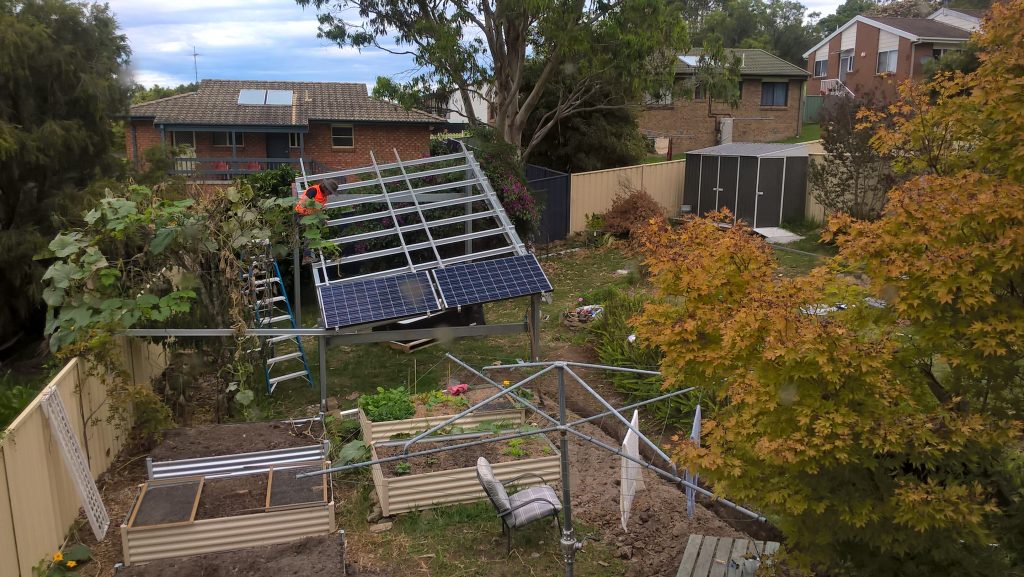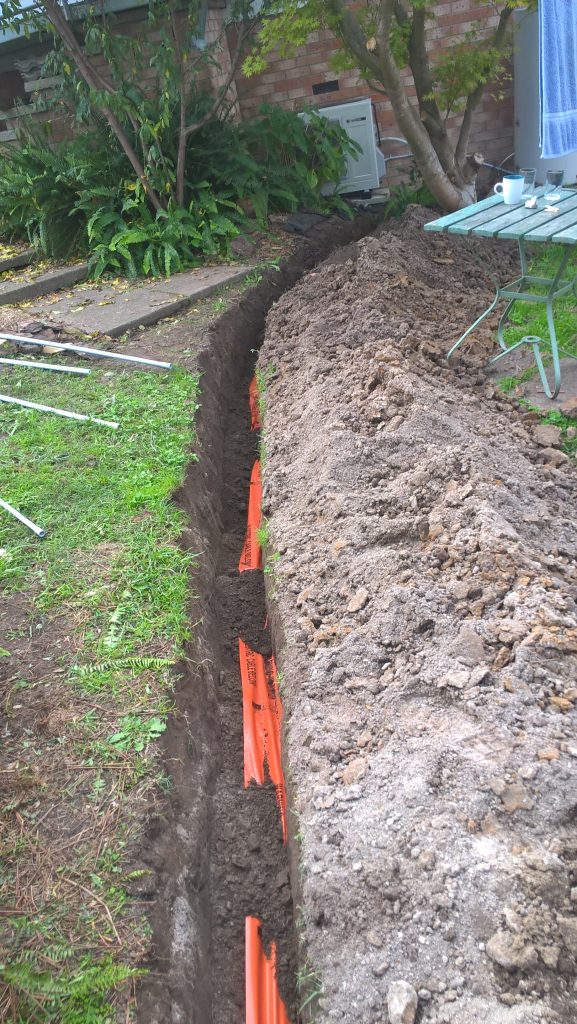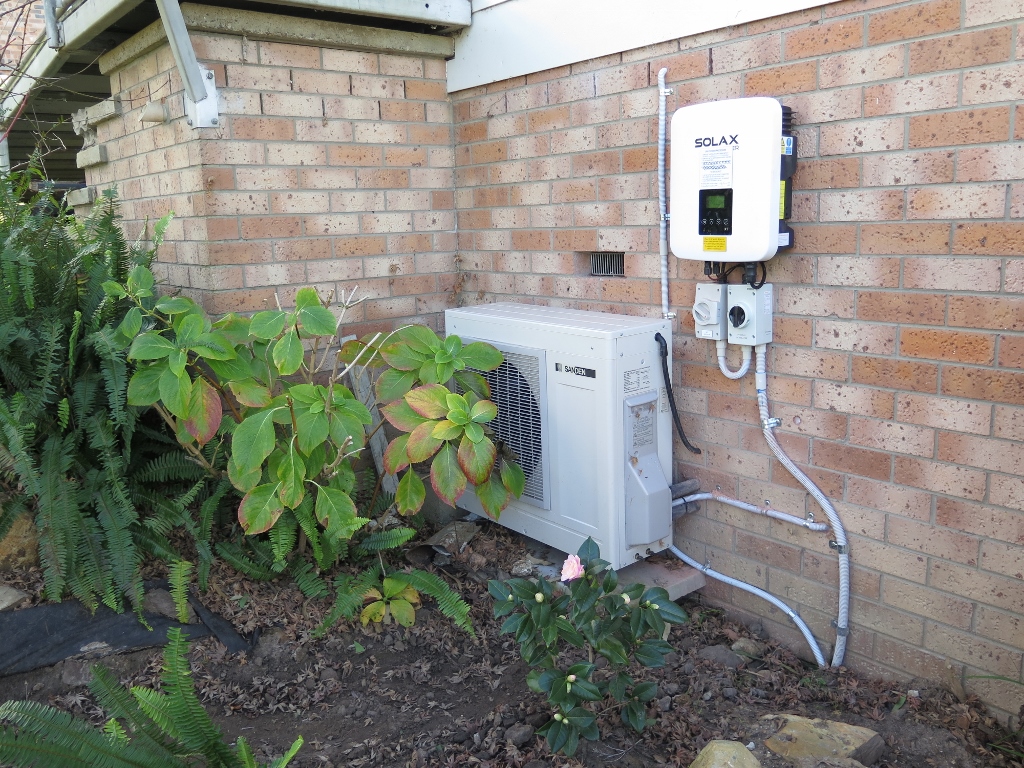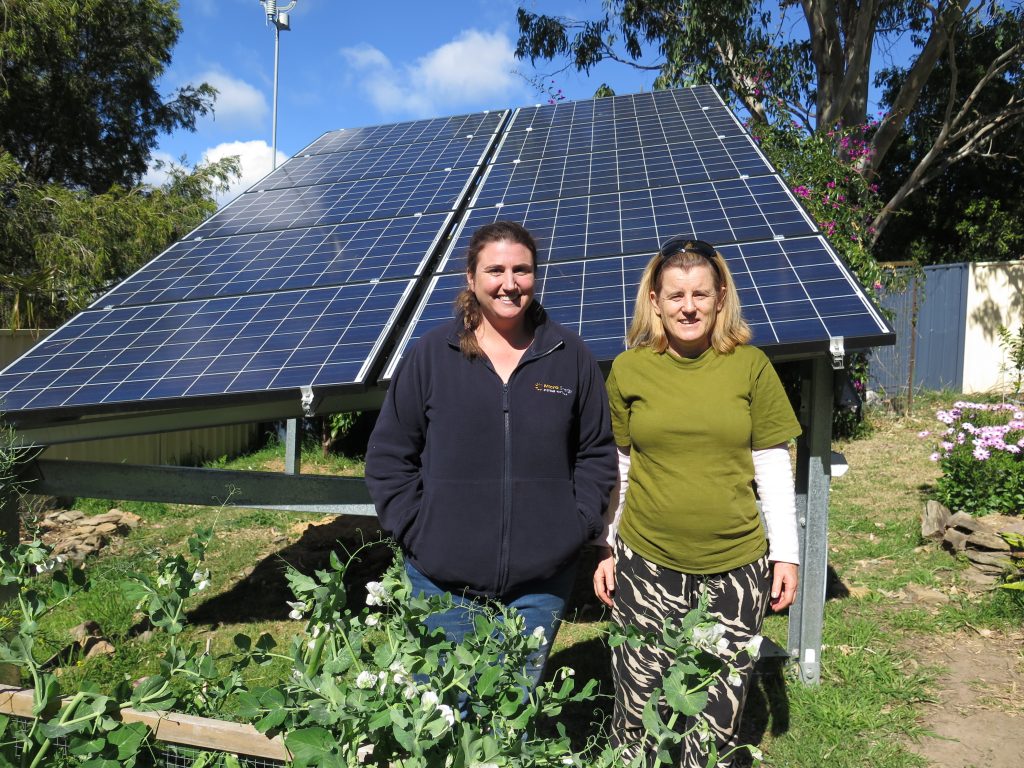Kathryn and Thomas’s story
In 2015 we put a 3kW, micro inverter, solar PV system on our roof. After a period of time we discovered that, for a number of reasons, it did not generate enough electricity to meet our needs. Because of the small size of our roof and the nearby trees it was not practical to expand the system by adding more panels on the roof.
What could we do?
There seemed to be one practical solution. Build a ground frame in the backyard and mount more panel onto it. After discussions with the Eurobodalla Shire Council it was decided to build a pergola in the backyard. As well as hosting the PV panels, the area under the pergola could be used for other purposes, eg a fern garden or barbeque. In April 2017, as part of the SHASA solar bulk buy, Micro Energy Systems Australia (MESA) installed ten 280w Australian made Tindo panels on the backyard pergola.

Frame for the solar pergola 
Solar array under construction 
Trench for cable from solar array to the inverter 
SolaX Inverter 
Kathryn with Lisa from MESA in front of the new solar array
This solar PV system generates approximately 4000 kWh per annum, slightly more than its rooftop stable mate. The array has a northerly alignment with a pitch of 25degrees, and slight easterly tilt to catch the morning sun a bit earlier. We live on the eastern side of a hill so we don’t get as much westerly sun as at a flatter location.
Combined with some energy efficiency measures the two arrays, with a total installed generating capacity of 5.8kw, more than meets our electricity needs and has vanquished our electricity bill. We export a lot more electricity than we import and self consume (behind the meter consumption) a goodly portion of our daily needs. We do this by heating water during the day using the timer on our Sanden heat pump hot water heater and doing chores like vacuuming and clothes washing during daylight hours as much as possible.
The solar PV has been a good investment. Firstly, it generates all the electricity we need and secondly and, perhaps more importantly, it reduces the amount of CO2 that would be pumped into the atmosphere meeting those needs. Best of all it will have paid for itself in a few short years and generate profits for decades to come.